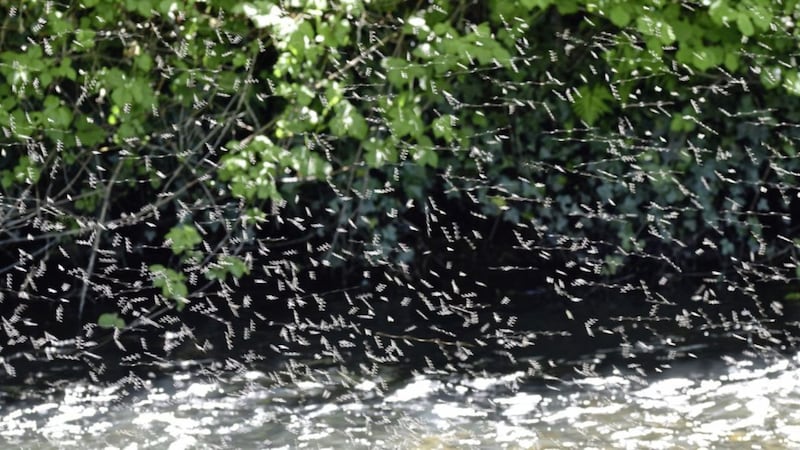MANY years ago, more than I care to remember, when I played football for my home club of An Droim Mór, I frequently had the company of a character known locally and further afield as ‘big Tommy’, performing the duties of umpire alongside me as goalkeeper.
Between opposition attacks, Tommy, now sadly gone from us, used to lean his tall rugged frame into the post and regale me with stories about fishing, society’s ills and midges.
During games on warm humid evenings like those we’ve had recently, I was regularly tortured and devoured by the nasty biting flies, left with itchy lumps made worse by constant rubbing. Amused by my swiping at clouds of midges, Tommy always advised me to ignore them, not to scratch and that they would soon disappear. I was never convinced and to this day, I still succumb to their irritating bites from June to September.
Of the 29 or so species of midge in Ireland, only six bite people, the most significant culprit being Culicoides impunctatus which along with the others becomes active on calm cloudy and moist days.
Midges proliferate around stagnant water and boggy areas, often a scourge to those working outdoors on the hills or near forests. Usually most active at dawn and dusk, they also appear during the day if conditions are right, but they dislike strong sunshine, dry air or breezes above 6mph.
Almost invisible to the human eye, midges measure as small as 1mm long, with a wing span of only 2mm, giving them the often-used name ‘no-see-ums’. Only the female bites as the male’s mouthparts are not strong enough to pierce our skin. The female needs blood as a source of protein for the development of eggs, so she uses her scissor-like mouthparts to cut our skin and suck up the blood, with her saliva preventing the blood in the wound from clotting, ensuring she can keep drinking.
Some people are more affected and targeted than others by midges. Dr Alison Blackwell, CEO at Advanced Pest Solutions, Biocontrol Ltd says: "They are attracted by CO2 and even the tiniest of changes can be detected. Body heat and movement are factors as well. So training or outdoor activities when you are getting hotter and sweatier and breathing more heavily will bring the midges to you."
Various repellents are available which help to deter midges. The key chemical in most of the over-the-counter products is DEET (diethyltoluamide) while herbal alternatives include essential oils from plants such as lemongrass, eucalyptus and bog myrtle, the latter used for centuries in Scotland to fend off midges.
During a trip to the Highlands in 1872, Queen Victoria was reputedly forced to abandon a picnic, grumbling in her diary of being ‘half devoured’ by midges. The aromatic leaves of the herb mugwort were used in Ireland to repel the tiny insects, with some sources suggesting the plant name comes from the old English word mucgwyrt mentioned in the 10th century Nine Herbs Charm, meaning ‘midge plant’.
As with many plants and animals, this minuscule insect has found its way into many local place names which incorporate its Irish name, míoltóg. Not far from me in the parish of Kilskeery, is the townland of Meeltogues, a midgy place, while a small lake called Loughnameeltogue nestles among the Bluestack Mountains, Co Donegal.
Returning to the late Tommy, whatever about his advice on the dreaded midge, he was a very useful ally to have by my posts when a favourable decision was required on a ‘square’ ball, a ‘wide’ ball or on any other controversial call.








